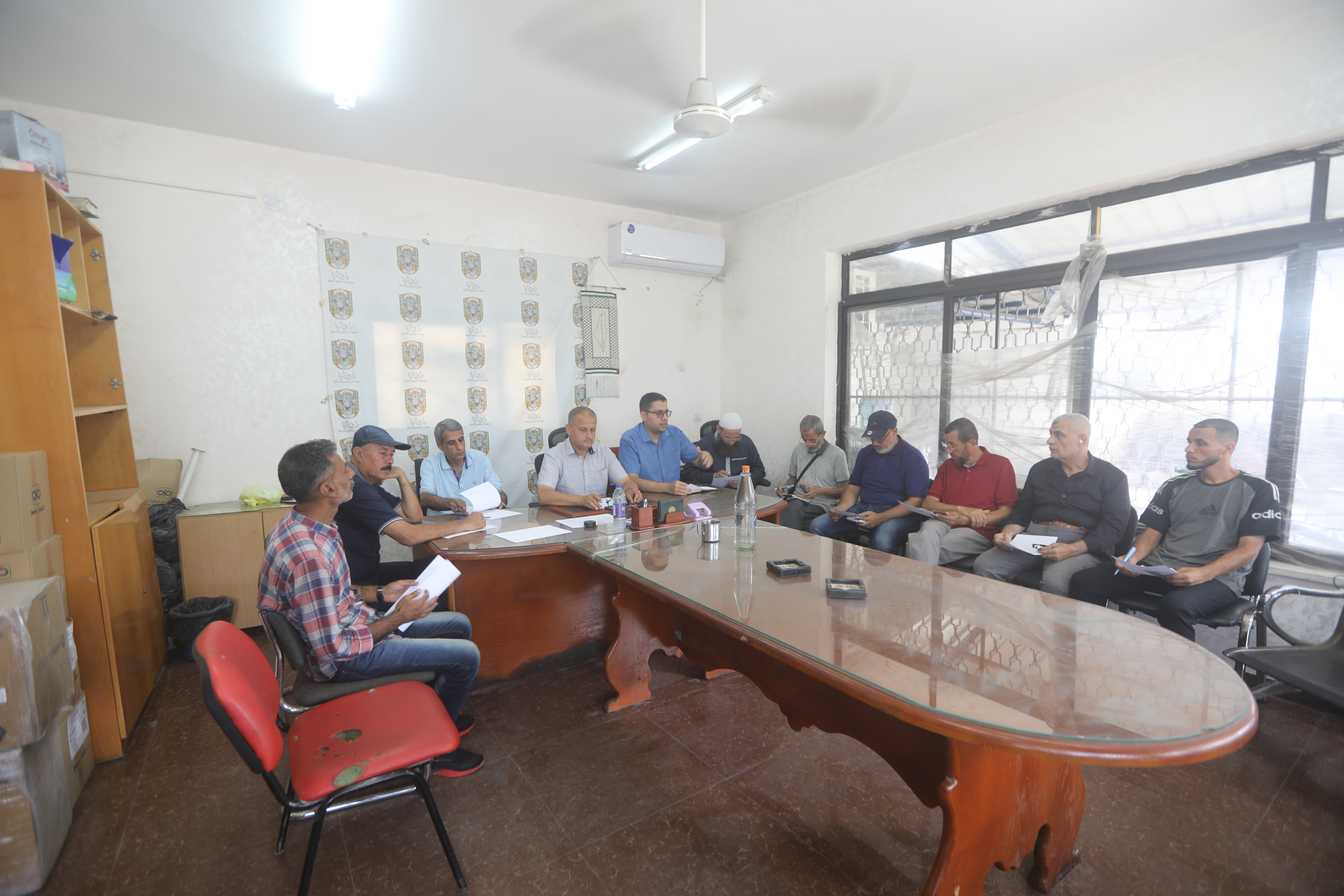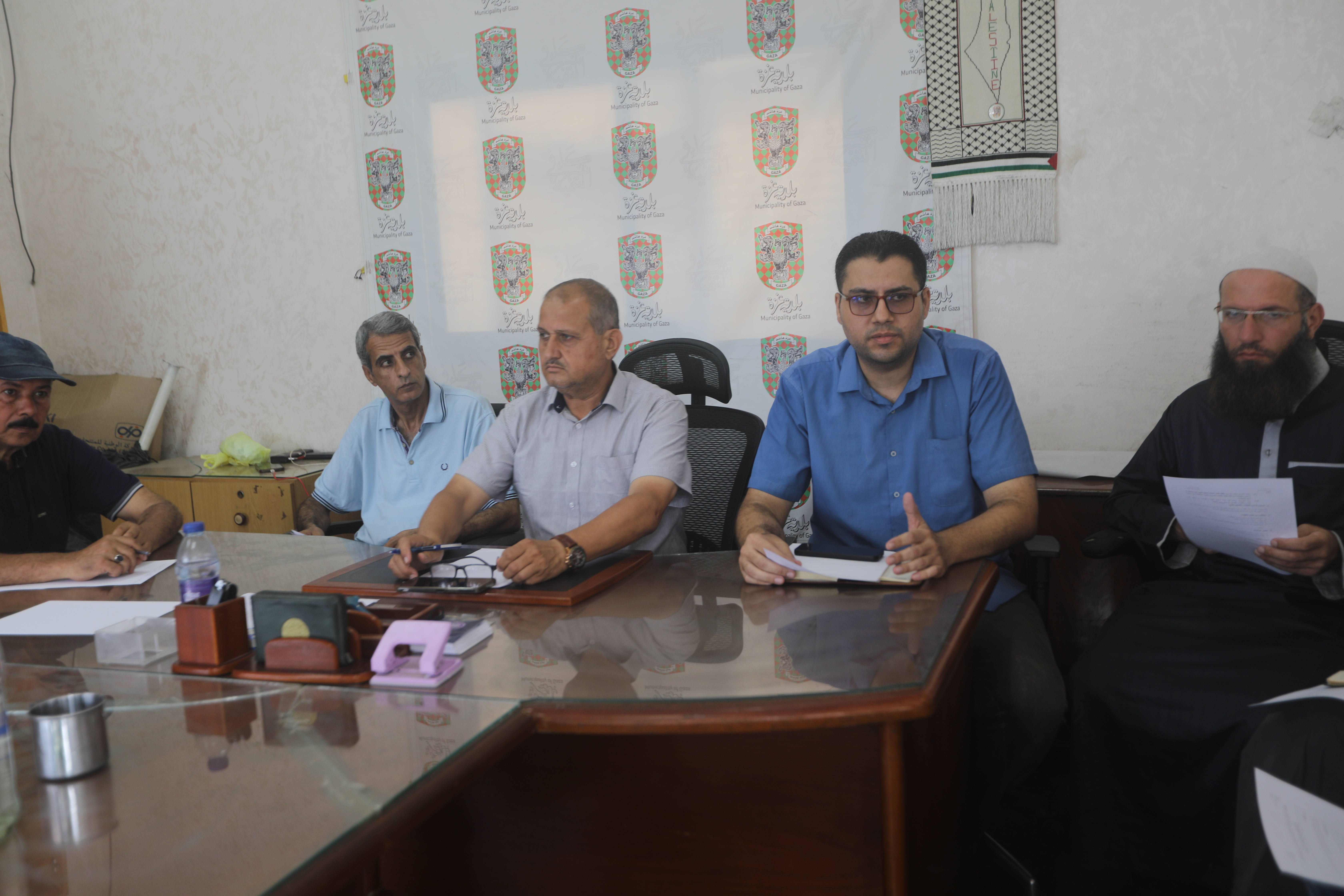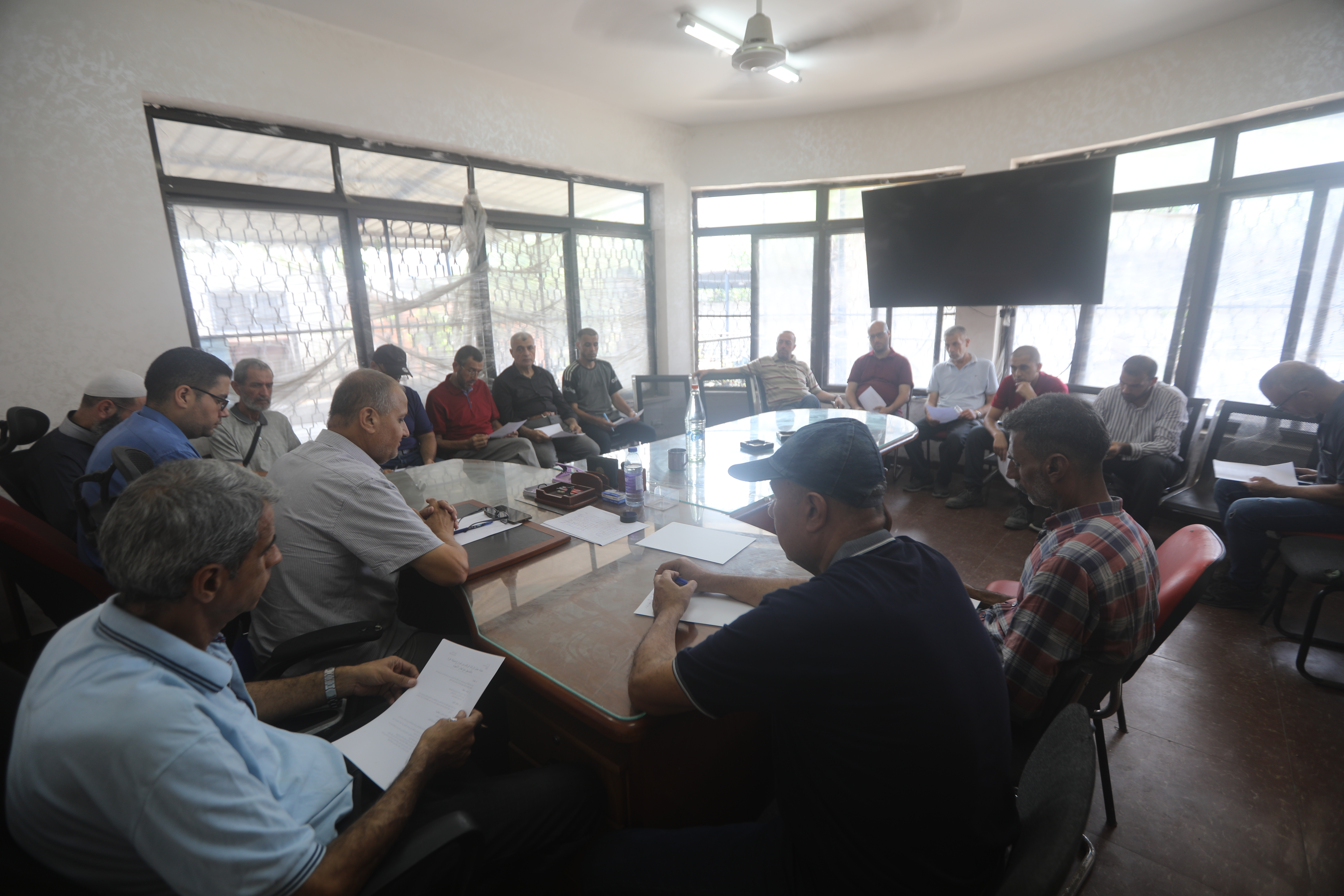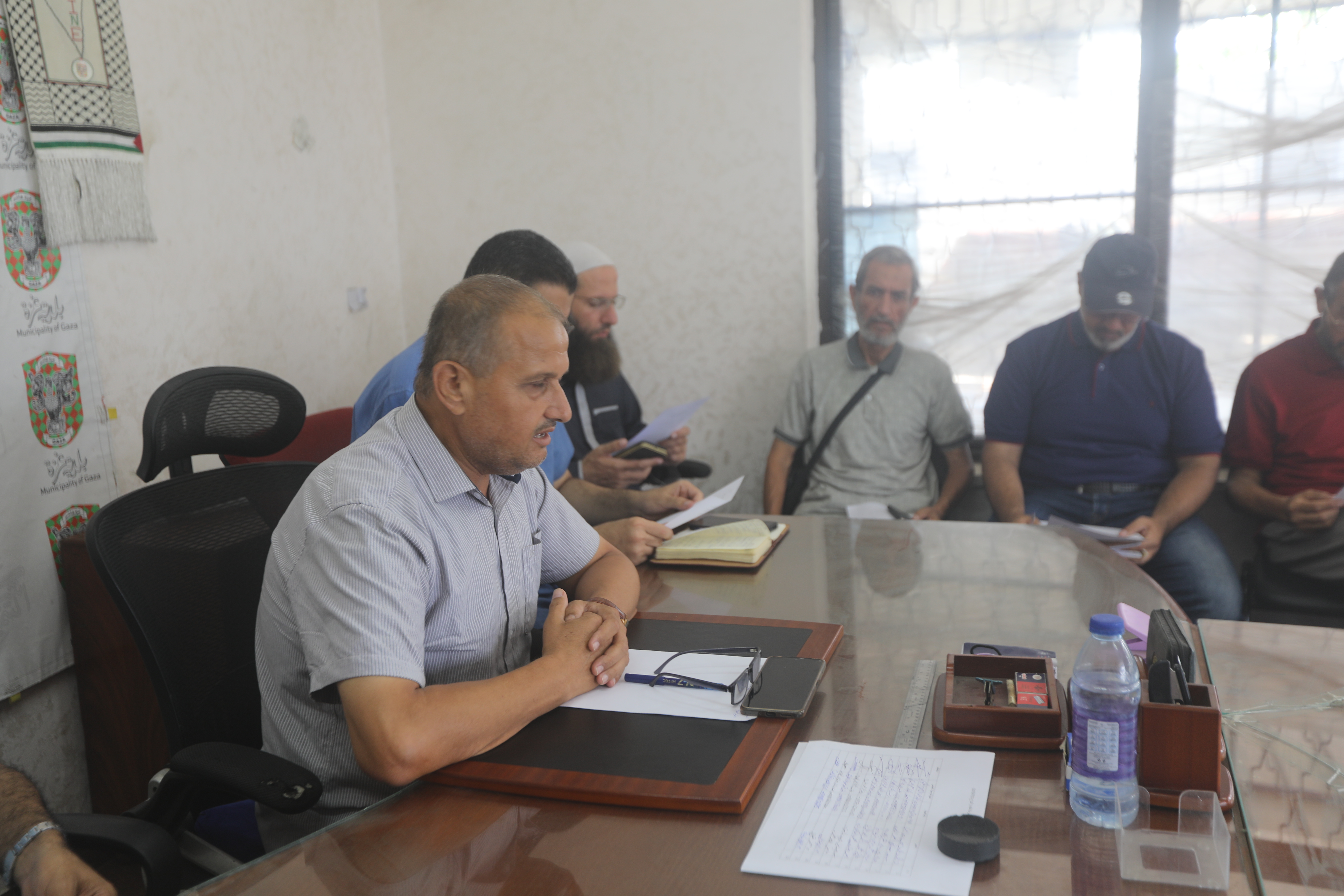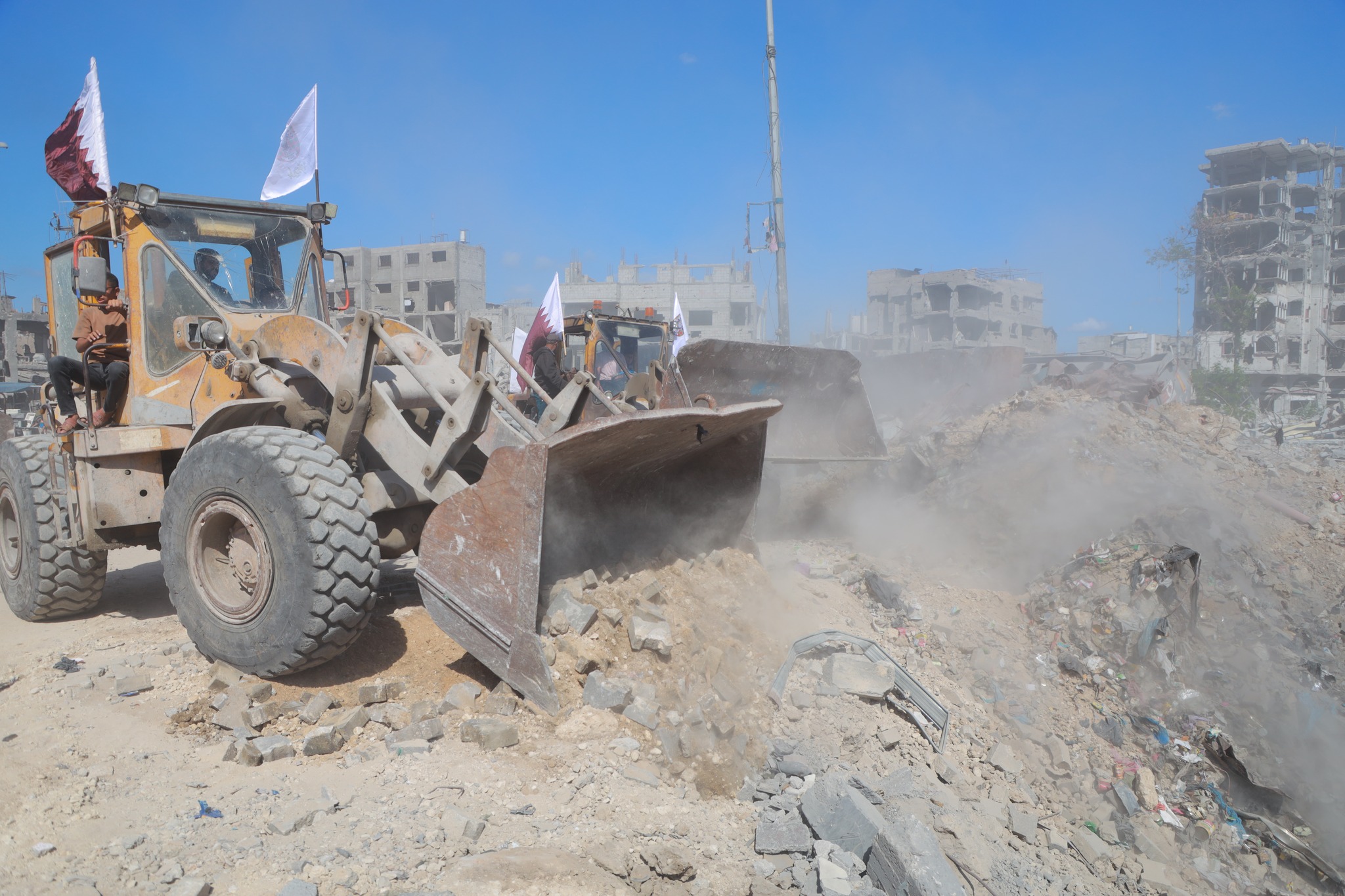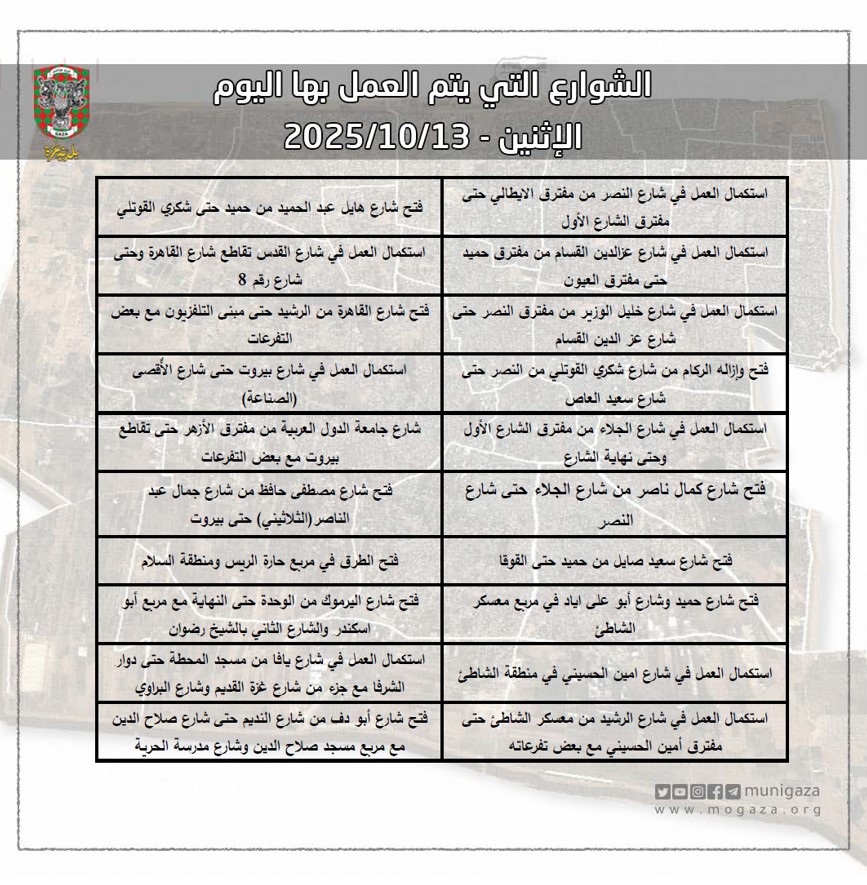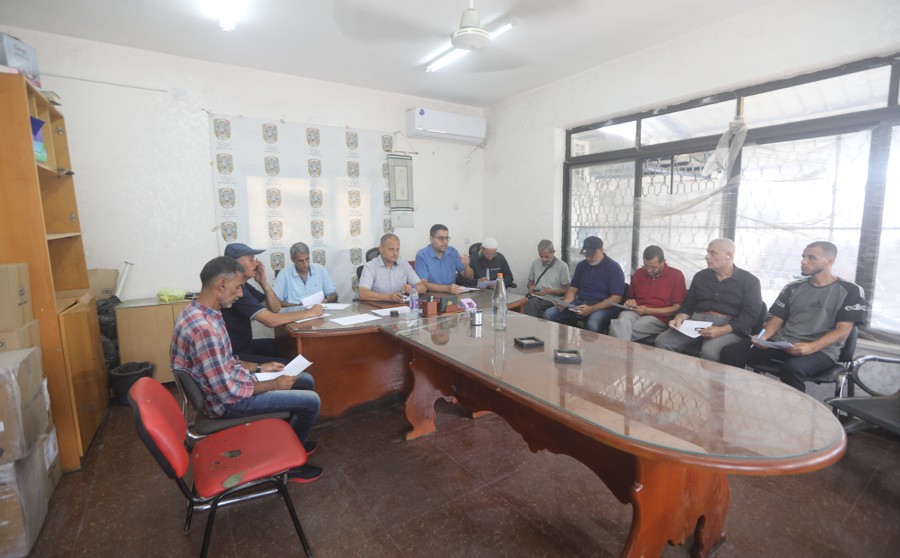
English bellow
إعلام البلدية
بحثت بلدية غزة، مع ممثلين عن لجان الأحياء، خطتها لفتح الشوارع وإزالة الركام، تحسبا لدخول اتفاق هدنة ووقف مؤقت لحرب الإبادة حيّز التنفيذ، بهدف تسهيل عودة المواطنين النازحين إلى مناطقهم، ولا سيّما الأحياء الشرقية من المدينة.
جاء ذلك خلال لقاء عُقد في كراج البلدية، بحضور عضو المجلس البلدي مصطفى قزعاط، وعدد من ممثلي لجان الأحياء، ومجموعة من المختصين في البلدية. وتم خلال اللقاء مناقشة سبل التعاون بين البلدية ولجان الأحياء في فتح الطرق، وإمكانات واحتياجات البلدية لتنفيذ الأعمال، إضافة إلى آليات التعاون مع القطاع الخاص في هذا المجال.
وأوضح عضو المجلس البلدي مصطفى قزعاط أن بلدية غزة تواجه تحدّيات جسيمة نتيجة نقص الإمكانيات والآليات، وعدم توفّر الوقود اللازم لتشغيل المعدات والمرافق، إلى جانب حجم الدمار الكبير الذي لحق بالمدينة جراء العدوان المستمر.
وأكد الحضور ضرورة تكاتف الجهود بين البلدية ولجان الأحياء لتسهيل عودة المواطنين إلى منازلهم بأمان، ووجّهوا الدعوة إلى ضرورة توفير الدعم اللازم لتمكين طواقم البلدية من أداء مهامها بالتعاون مع المجتمع المحلي، في إطار تعزيز المشاركة والمبادرات المجتمعية.
وبيّن قزعاط أن المرحلة الأولى من أعمال فتح الطرق ستركّز على المناطق الشرقية من المدينة، والتي تشهد توغلات متكررة من قوات الاحتلال، وتشمل أحياء الشجاعية، وشرق التفاح، والدرج، وشرق الزيتون، والبلدة القديمة، نظرا لحجم الدمار الكبير الذي طال تلك المناطق، على أن تمتد الأعمال لاحقًا إلى المناطق الغربية من المدينة.
وقدّم مسؤولو البلدية خلال اللقاء عرضا تفصيليا لخطة البلدية للتعامل مع الشوارع المغلقة بفعل القصف والتدمير، شمل الآليات والمعدات المطلوبة، والجدول الزمني للتنفيذ، وآلية تقييم الأعمال، إضافة إلى محدّدات اختيار الشوارع المستهدفة. وأكدوا أنّ البلدية ستنفّذ جولات ميدانية استكشافية فور دخول الهدنة حيّز التنفيذ، بمشاركة لجان الأحياء، لتحديد أولويات العمل وفقًا للمحددات المعتمدة في الخطة.
وشدّد المشاركون في اللقاء على أهمية التعاون مع سكان الأحياء لتخصيص أماكن مؤقتة لتجميع الركام في كل حي، وتعيين ممثل عن كل حي لمتابعة ملف إزالة الركام وفتح الطرق بالتنسيق مع المختصين في البلدية، لضمان المتابعة والتقييم المستمر للأعمال المنفذة.
واتفق المشاركون على أهمية تعزيز التعاون والتنسيق بين البلدية ولجان الأحياء ومختلف شرائح المجتمع لتسهيل أعمال فتح الشوارع، والتخفيف من آثار الكارثة الإنسانية التي تشهدها المدينة، مطالبين المؤسسات المحلية والدولية بالإسراع في تقديم المساعدات اللازمة للبلدية، لتمكينها من تقديم الخدمات وفتح الشوارع وتسهيل حركة المواطنين داخل المدينة
.
In Anticipation of a Potential Ceasefire Agreement
Gaza Municipality Discusses Street Reopening and Rubble Removal Plan with Neighborhood Committees
In anticipation of a potential ceasefire and a temporary halt to the ongoing war of extermination, Gaza Municipality held a meeting with representatives of neighborhood committees to discuss its plan for street reopening and rubble removal. The initiative aims to facilitate the safe return of displaced residents to their homes, particularly in the city’s eastern neighborhoods.
The meeting took place at the municipal garage and was attended by Municipal Council Member Mustafa Qaza’at, several representatives of neighborhood committees, and a team of municipal specialists. Discussions focused on cooperation mechanisms between the municipality and neighborhood committees, the resources and equipment required for street reopening, and potential partnerships with the private sector to support implementation.
Council Member Qaza’at explained that the municipality faces immense challenges due to a lack of equipment and critical fuel shortages needed to operate machinery and public service facilities. He also highlighted the extensive destruction caused by the ongoing aggression.
Participants emphasized the importance of collective efforts between the municipality and neighborhood committees to ensure the safe and organized return of residents. They called for urgent support to enable municipal teams to perform their duties in cooperation with local communities, as part of broader efforts to encourage civic engagement and community-based initiatives.
Qaza’at noted that the first phase of the street reopening plan will focus on the eastern parts of the city, which have experienced repeated incursions by occupying forces. These include the neighborhoods of Shuja’iya, East Tuffah, Al-Daraj, East Zeitoun, and the Old City, all of which have sustained extensive damage. The plan will later expand to include the western areas of Gaza City.
During the meeting, municipal officials presented a detailed outline of the street reopening strategy, including the types of equipment needed, an implementation timeline, evaluation mechanisms, and the criteria for prioritizing affected streets. They confirmed that field assessment visits will begin as soon as a ceasefire takes effect, with neighborhood committees participating to help determine work priorities in accordance with the plan’s guidelines.
Participants underscored the need to engage residents in each neighborhood by designating temporary debris collection sites and appointing local representatives to coordinate cleanup efforts with municipal teams. This step is crucial to ensure consistent monitoring and evaluation of the ongoing work.
The attendees agreed on the importance of enhancing cooperation and coordination among the municipality, neighborhood committees, and all sectors of society to accelerate street reopening efforts and alleviate the impact of the ongoing humanitarian catastrophe in the city. They appealed to local and international organizations to urgently provide the necessary support to the municipality, enabling it to restore vital services, reopen roads, and facilitate the movement of residents throughout Gaza City.
